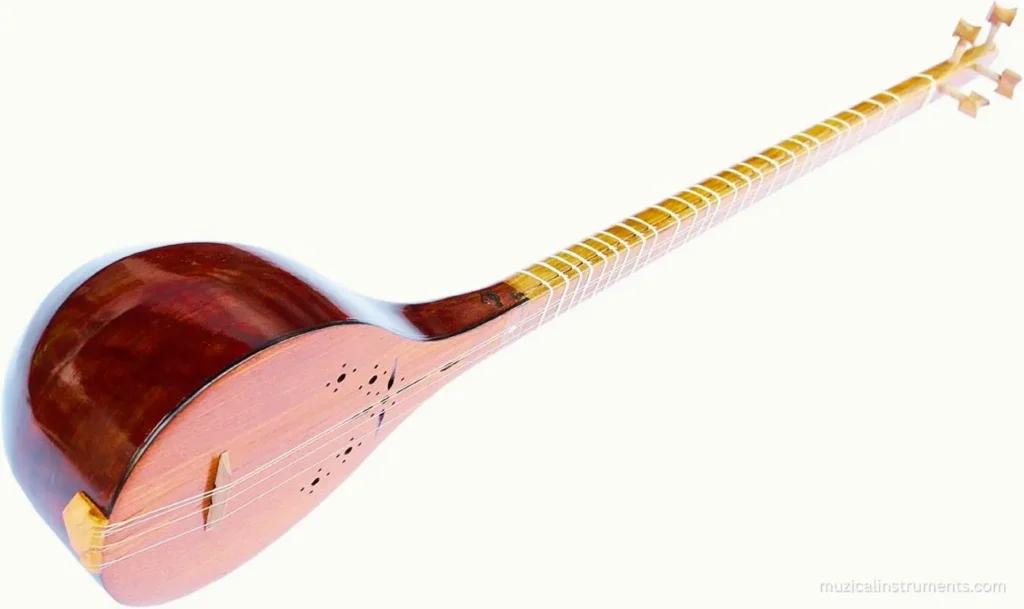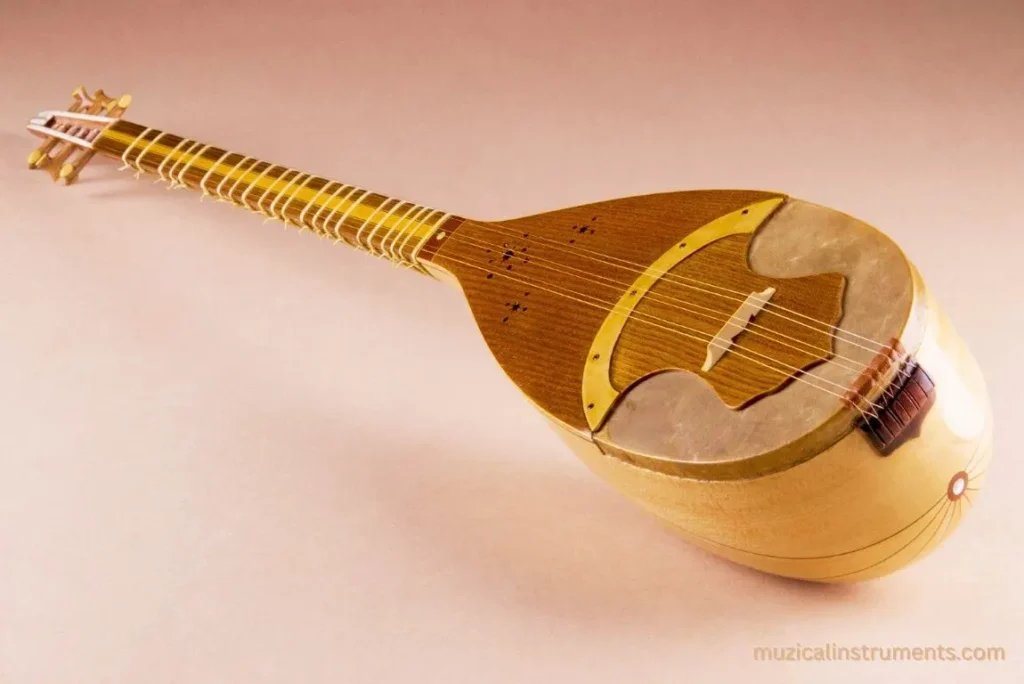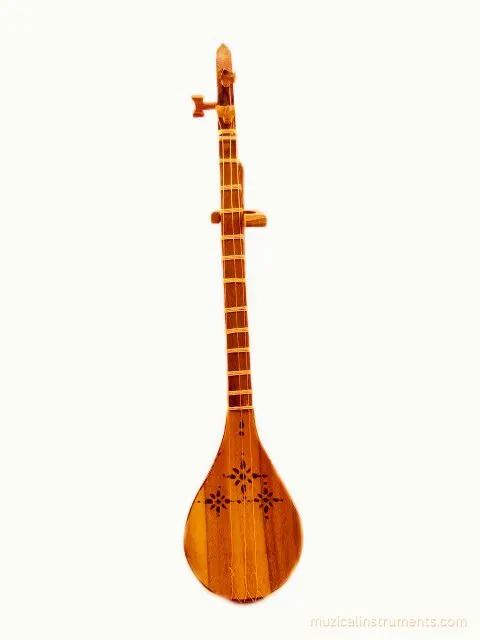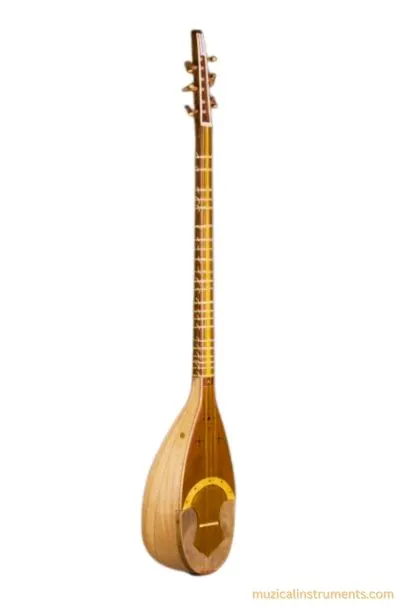What is the difference between Shurangiz and Setar?
What is the difference between Shurangiz and Setar? Both are stringed instruments from Persian music. Both look a lot alike. But they’re not the same.
The Setar is old, soft, and made of wood. It has four metal strings and a quiet voice. People use it for solo songs and spiritual music.
The Shurangiz is newer. It has six strings, a rounder body, and a skin top like a drum. That makes it louder and brighter. It was made by Ibrahim Qanbari Mehr, with help from Ali Tajvidi, to bring new life to Persian sound.
Here you’ll learn every key part of what makes them different. So you can pick the one that feels just right for you.
Quick Look: Difference Between Shurangiz and Setar
| Feature | Setar | Shurangiz |
|---|---|---|
| Strings | 4 metal strings | 6 strings (metal and nylon mix) |
| Body shape | Small, narrow, pear-shaped | Larger, rounder, deeper bowl |
| Soundboard | Full wood top | Wood center, skin edge (like a drum) |
| Sound / Tone | Soft, warm, quiet | Bright, louder, more projection |
| Volume | Low, best for solo play | Strong, fills larger rooms |
| Style / Use | Classical, spiritual, solo | Modern, ensemble, fusion-friendly |
| Tuning (range) | Traditional Persian scale | Sometimes tuned an octave lower |
| Origins | Centuries-old, linked to Sufism | Modern (1900s), by Qanbari Mehr |
| Learning curve | Beginner-friendly | Better for experienced players |
What Is a Setar?

The Setar is one of the oldest instruments in Persian music. It looks small, with a body shaped like a pear. It has four metal strings and a gentle voice.
When you play a setar, it feels soft, almost like it’s talking just to you. That’s why many people use it for solo music or quiet, spiritual songs. You won’t hear it shouting. It doesn’t need to.
The whole body is made of wood, which gives it a warm sound. It’s been part of Persian culture for hundreds of years. Some of the best players, like Hossein Alizadeh, have used the setar to share deep feelings without saying a word.
Understanding the difference between Shurangiz and Setar often highlights the journey of Persian musical innovation, from intimate, quiet instruments to those suited for larger ensembles.
If you’re just starting out, the setar is a kind friend. Easy to hold. Easy to love.
What Is a Shurangiz?

The Shurangiz is like Setar’s cousin. It looks a bit bigger and feels a bit bolder. It was made in the 1900s by a man named Ibrahim Qanbari Mehr, with help from musician Ali Tajvidi. They wanted something new, something louder, but still full of soul.
This instrument has six strings, not four. Some are nylon, some are metal. That mix gives it a brighter, more powerful sound. The body is rounder, and the top is special. It’s made with wood in the middle and animal skin around the edge, kind of like a drum. That skin helps the sound carry farther.
People use the shurangiz when they want their music to fill a room. Some versions are tuned lower, giving it a deep, rich voice. It can play soft songs too, but it really shines in group music or modern styles.
Ultimately, the core difference between Shurangiz and Setar lies in their character: If the setar is a soft poem, the shurangiz is a strong voice with feeling. Bold, bright, and made to be heard.
Structure & Material: What is the difference between Shurangiz and Setar?
The difference between Shurangiz and Setar starts with how they’re made. The setar is pretty simple and light. It’s all wood from the body to the top. That wooden top gives it a soft, warm sound, like a quiet voice you can almost whisper to.
The shurangiz feels a little different. Its top isn’t just wood, part of it is covered with animal skin, like a tiny drum stretched over the edge. That might sound small, but it changes everything. It makes the sound louder and sharper, so it fills the room much easier.


There’s also a difference in string count. The setar has 4 metal strings, while the shurangiz has 6 strings, often in pairs. Some are nylon, which makes the sound brighter.
The fingerboard on the shurangiz is longer too. It has more frets, so players can reach extra notes and go deeper into Persian music styles.
So yes, both look close. But once you feel the build and hear the tone, the difference between Shurangiz and Setar becomes very clear.
How Do They Sound?
So, what is the core difference between Shurangiz and Setar when it comes to their sound?
The Setar is quiet. Really quiet. It has this soft, warm tone that feels personal, like someone playing just for you in a quiet room. It doesn’t try to be loud. It’s more about feeling than showing off.


The Shurangiz, on the other hand, speaks up. It’s got a brighter, fuller sound. That little bit of skin on the body? It gives it more volume. You’ll hear it better in a group or on stage. It still has soul, but it’s not shy about being heard.
If the Setar is a whisper, the Shurangiz is more like a clear voice in the crowd.
Who Should Choose Which One?
If you’re not sure where to start, here’s something that might help.
The difference between Shurangiz and Setar isn’t just about sound, it’s also about what you need.
Go with the Setar if you like soft, deep music. It’s great for learning, and even better for playing alone. If you want something simple, light, and full of feeling, this one fits.
Now, if you want a bit more power, the Shurangiz might be the better pick. It’s louder, a little heavier, and made to be heard in bigger spaces. If you plan to play with others or want a stronger sound, this one will carry better.
In the end, both are beautiful. It just depends on what feels right in your hands and what kind of music you want to make.
A Note on Persian Music Culture
To really feel the difference between Shurangiz and Setar, it helps to know where they come from.
The Setar goes way back. It’s closely tied to Sufi music and deep, spiritual traditions in Iran. It wasn’t just used for songs, it was a way to connect the soul with something higher. The soft, personal sound of the setar made it perfect for that kind of inward music.
The Shurangiz is much newer. It was created in the 20th century by master craftsman Ibrahim Qanbari Mehr, with ideas from musician Ali Tajvidi. They wanted something that could carry the feeling of the setar but be heard more clearly in modern music spaces. So the Shurangiz was born, not to replace the setar, but to grow alongside it.
Both instruments have been played by incredible artists. Names like Hossein Alizadeh, Dariush Tala’i, Masoud Shoari, and Kayhan Kalhor stand out. These musicians have helped keep Persian music alive, both inside Iran and around the world.
So whether you’re a fan, a learner, or just curious knowing the roots makes the music mean more.
Final Thought: The Difference Between Shurangiz and Setar Two Voices, One Heart
At the end of the day, understanding the difference between Shurangiz and Setar is simple..
If you want something soft and personal, the Setar might be your match. It’s quiet, gentle, the kind of sound that stays with you even after you stop playing.
If you want something with more punch, something that fills a space, then try the Shurangiz. It’s got volume. It’s got presence. But it still feels honest.
There’s no better one. Just different vibes.
Try them. Listen. See which one feels right in your hands.
That’s the one you should play.
If you’re interested in traditional plucked instruments from other regions, take a look at Algeria’s soulful Kwitra string instrument, known for its rich, heartfelt sound.
FAQ: What is the difference between Shurangiz and Setar?
1. Is the Shurangiz harder to play than the Setar?
Not really! The main difference between Shurangiz and Setar is in their construction, not playing difficulty. If you can play the Setar, the Shurangiz won’t feel too different. The main change is having a couple more strings and a slightly bigger body. It might take a bit of time to get used to the extra strings, but if you’re patient, it’s just another fun step in your musical journey.
2. Can I use the same music for both instruments?
Mostly, yes! Since they share a similar tuning system and style, you can often play the same songs on both. Just keep in mind that the Shurangiz’s extra strings and range might give you some new notes to explore if you want.
3. Which one is louder?
The Shurangiz definitely wins here. Thanks to its animal skin soundboard, it’s naturally louder and carries better in a room. The Setar’s sound is softer and more intimate, perfect if you want something gentle.
4. Are professional musicians using both instruments?
Absolutely! Many masters like Hossein Alizadeh and Masoud Shoari play both. The Setar is a classic favorite, but the Shurangiz brings a fresh, vibrant tone to modern Persian music.
5. Can kids learn to play these instruments?
Totally! The Setar is a great starting point for younger players because it’s light and simple. The Shurangiz is a bit bigger and might be better for teens or adults ready for more challenge. Either way, both instruments teach great technique and musicality.
6. How do I care for my Shurangiz or Setar?
Both need gentle care. Keep them away from extreme heat or cold, and avoid too much humidity, especially the Shurangiz because of its skin top. Wipe them down after playing, and store them in a good case to keep them safe.
7. Where can I buy a good Shurangiz or Setar?
Look for trusted makers or music shops that specialize in Persian instruments. Online stores like Delaramm or Reverb can be great places to start. Always check reviews and ask about warranties if you can.
